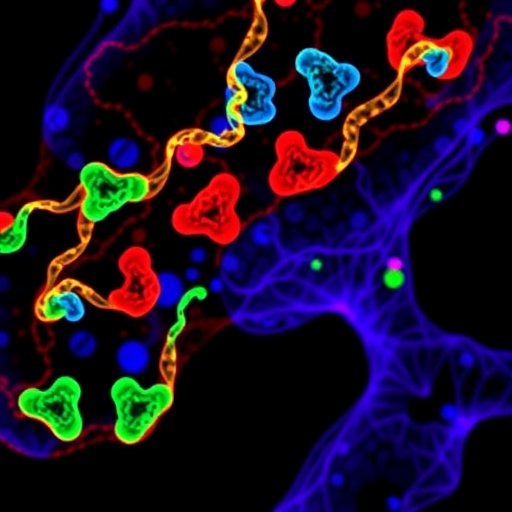In recent years, the field of oncology has witnessed remarkable advancements, particularly in understanding the molecular mechanisms underlying various cancers. Among them, hepatocellular carcinoma (HCC) has emerged as a prominent target for research due to its increasing prevalence and poor prognosis. A recent study led by Kong, W. et al., published in Scientific Reports, delves into the role of CPSF3, a gene that has attracted significant interest for its potential prognostic value and functional implications in HCC. This groundbreaking research sheds light on how CPSF3 could serve as a critical biomarker in this aggressive form of liver cancer, potentially paving the way for improved patient outcomes.
CPSF3, known as Cleavage and Polyadenylation Specificity Factor 3, plays a vital role in the post-transcriptional regulation of gene expression. Its primary function involves the cleavage and polyadenylation of messenger RNA (mRNA), a critical step in the maturation of RNA molecules that influences gene expression profiles. This regulatory process has profound effects on cellular functioning and, when dysregulated, can lead to cancer progression. The findings from the study indicate that CPSF3 is not only pivotal in mRNA processing but may also have oncogenic properties.
The study’s authors conducted extensive analyses to determine the expression levels of CPSF3 in HCC tissues compared to non-tumor liver tissues. Through advanced techniques such as quantitative PCR and immunohistochemistry, they discovered that elevated CPSF3 levels were significantly associated with poor prognosis in HCC patients. This correlation between high CPSF3 expression and adverse clinical outcomes suggests that CPSF3 could be an essential player in the aggressive behavior of HCC, prompting further investigation into its mechanistic role in tumor biology.
One of the intriguing aspects of this research is CPSF3’s involvement in the alternative splicing of pre-mRNAs, a process that allows a single gene to produce multiple protein variants. This can lead to the generation of isoforms that may promote tumorigenesis or enhance cancer cell survival. The study provides compelling evidence that CPSF3 facilitates the expression of splice variants that confer a survival advantage to HCC cells, thereby supporting their proliferation and resistance to apoptotic signals.
Furthermore, the authors explored how CPSF3 might interact with other oncogenic pathways. Their findings suggest a possible link between CPSF3 expression and the activation of key signaling pathways involved in cell proliferation, migration, and invasion. Specifically, the study points to an interplay between CPSF3 and the Wnt/β-catenin signaling pathway, which is well-known for its role in embryonic development and has also been implicated in various cancers, including HCC.
Understanding the functional role of CPSF3 could lead to novel therapeutic strategies for HCC. The study postulates that targeting CPSF3 through specific inhibitors or RNA interference could disrupt the cancer cell’s reliance on this pathway, ultimately leading to reduced tumor growth and increased sensitivity to conventional therapies. This therapeutic angle presents an exciting prospect for enhancing the efficacy of existing treatment modalities for HCC patients.
Moreover, the study emphasizes the importance of early detection and personalized treatment approaches in HCC. By utilizing CPSF3 expression levels as a prognostic biomarker, clinicians could stratify patients based on their risk profiles, allowing for tailored interventions. This personalized medicine approach is becoming increasingly vital in oncology, as it aims to optimize treatment effectiveness while minimizing unnecessary side effects in patients.
In addition to clinical implications, the research conducted by Kong and colleagues opens new avenues for basic science investigations. Future studies could focus on elucidating the cellular mechanisms by which CPSF3 influences mRNA processing and splicing in the context of HCC. Furthermore, exploring the potential interactions between CPSF3 and other oncogenes or tumor suppressors could provide deeper insights into the molecular landscape of liver cancer.
Interestingly, as the need for comprehensive cancer research persists, acknowledging the limitations of this study is crucial. The authors themselves note that further validation in larger cohorts and diverse populations is essential to corroborate their findings. Additionally, the functional experiments conducted primarily in vitro warrant further exploration in vivo, where the tumor microenvironment can profoundly influence cellular behaviors.
Overall, the study by Kong et al. serves as a critical step forward in unraveling the complexity of hepatocellular carcinoma. By focusing on CPSF3, the authors have not only identified a potential prognostic biomarker but also opened the door to new therapeutic strategies that could radically change the management of HCC. As research continues to evolve, the hope is that these findings will contribute to improved outcomes and a better understanding of the molecular underpinnings of liver cancer.
In conclusion, HCC remains a formidable challenge in cancer treatment, but studies like this one demonstrate that scientific inquiry is yielding valuable insights. CPSF3 stands out as a promising candidate for both understanding the biology of HCC and advancing clinical practices. Continued research efforts in this area are essential, as they will ultimately contribute to more effective strategies against one of the deadliest forms of cancer.
As we move forward, it is crucial to maintain a collaborative effort among researchers, clinicians, and the pharmaceutical industry to translate these findings into clinical applications. The journey from bench to bedside is fraught with challenges, but the potential rewards for patients battling hepatocellular carcinoma are significant. By harnessing the power of molecular research, we can strive towards a future where HCC is no longer a death sentence, but a manageable condition.
With the promise of targeted therapies on the horizon, the landscape of cancer treatment is gradually shifting. CPSF3 has the potential to play a pivotal role in this transformation, emphasizing the need for ongoing research and innovation in the fight against liver cancer. As long as we remain committed to exploring the depths of cancer biology, we can hope to uncover the next breakthrough that will change the course of treatment for millions of patients worldwide.
Subject of Research: The prognostic value and functional role of CPSF3 in hepatocellular carcinoma
Article Title: The prognostic value and functional role of CPSF3 in hepatocellular carcinoma
Article References:
Kong, W., Su, Y., Teng, L. et al. The prognostic value and functional role of CPSF3 in hepatocellular carcinoma.
Sci Rep (2025). https://doi.org/10.1038/s41598-025-29527-9
Image Credits: AI Generated
DOI: 10.1038/s41598-025-29527-9
Keywords: CPSF3, hepatocellular carcinoma, prognostic biomarker, cancer therapy, RNA processing, alternative splicing
Tags: biomarkers for liver cancer prognosisCleavage and Polyadenylation Specificity Factor 3CPSF3 as a prognostic biomarkergene expression regulation in HCChepatocellular carcinoma research advancementsimproving patient outcomes in hepatocellular carcinomainsights from CPSF3 research in liver cancermolecular mechanisms of liver canceroncogenic properties of CPSF3post-transcriptional regulation in cancerRNA maturation and cancer progressionsignificance of CPSF3 in oncology






